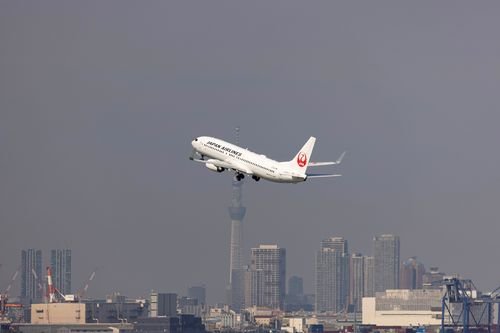Flights are taking huge ‘detours’ around Russian air space. Here’s what that means for the climate crisis

In lieu of using Russian airspace, some flights from Europe to Asia are flying south of the country or, in some cases, taking a painfully long reroute over the Arctic. And Russia is huge; it’s the largest country on the planet — larger than the continent of Antarctica.The new routes are leading to more time in the air for passengers and crew, more miles flown and more fuel burned — which means more planet-warming emissions. Japan Airlines Flight JL43 from Tokyo to London, for instance, uses a Boeing 777-300ER aircraft that burns roughly 2,300 gallons of fuel per hour. The rerouted JL43 flight — which now heads east over the North Pacific, Alaska, Canada and Greenland — added 2.4 hours of flight time and likely burned around 5,600 gallons more fuel, a 20% increase. That means Flight JL43 could be emitting an additional 54,000 kilograms, or 60 tons, of planet-warming carbon dioxide into the atmosphere, according to calculations by Paul Williams, an atmospheric scientist at the University of Reading, for CNN. That’s the same amount of carbon dioxide as the average car driving 137,000 miles, or nearly six times around the planet.
Williams said the exact fuel burn rate depends on the weight of the aircraft, the altitude and airspeed, and some of those variables are unknown. These calculations also do not factor in the warming effect of other greenhouse gas emissions or the flights’ condensation trails. “Naturally, a lot of people when thinking about aviation and climate, they focus on the CO2 emitted,” Williams told CNN. “But, actually, it’s much worse than that. CO2 is actually just the tip of the iceberg. The extra flight time is causing a lot more warming than the mileages I gave you because they only take into account the CO2, not the other non-CO2 effects.”Dan Rutherford, director of the International Council on Clean Transportation’s aviation and marine programs, told CNN that Williams’ calculations “look reasonable.””If anything, he is underestimating the likely impact because, at the margin, long-haul flights become even more fuel intensive with extra distance because they ‘burn fuel to carry fuel,’ in industry parlance,” Rutherford said.In other words, it’s a vicious, fuel-guzzling loop: It takes more fuel to carry the weight of more fuel.According to Rutherford estimated that if Russian airspace remains closed for much longer, the global aviation carbon inventory may increase by up to 1%.That seems very low, but air travel is a significant contributor to the climate crisis, accounting for more than 2% of the world’s carbon dioxide emissions as of 2018, according to the But right now, the extra emissions are unavoidable, Williams said. There are no other options than taking the long way around Russia.Airlines can invest in new, more efficient aircrafts and shift to sustainable aviation fuels, Rutherford said, but those are long-term solutions. Short-term strategies are limited. “The extra fuel use and emissions, and also extra fuel cost due to higher oil prices generally, are basically inescapable for airlines,” Rutherford said. “In addition to paying more, they can reduce payload — passengers or carriage — at the cost of some revenue, or they can cancel the flight.”In February, UN Secretary-General António Guterres said that the “current events” showed the world was too reliant on fossil fuels, calling them “a dead end.” A recent UN climate report shows that unless Earth’s warming is dramatically slowed, billions of people and other species may no longer be able to adapt to irreversible changes brought by fossil fuel emissions. Rutherford said he expects “renewed interest in developing alternative fuels in shipping and aviation, to distance those industries from Russian energy exports.””This particular war is causing a wide rethink about getting off of fossil fuels,” he said.




